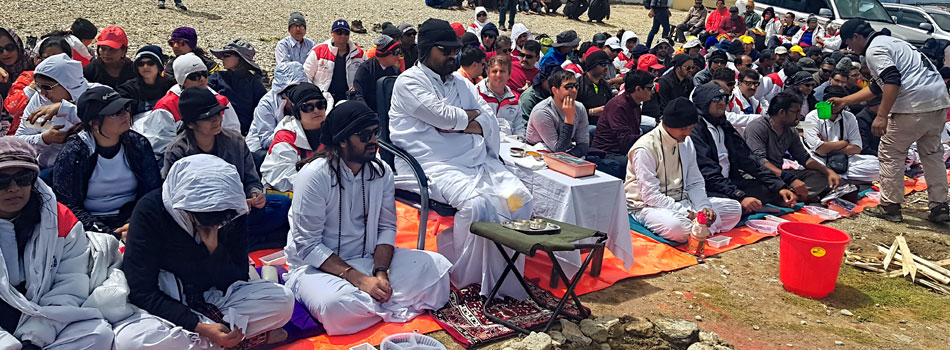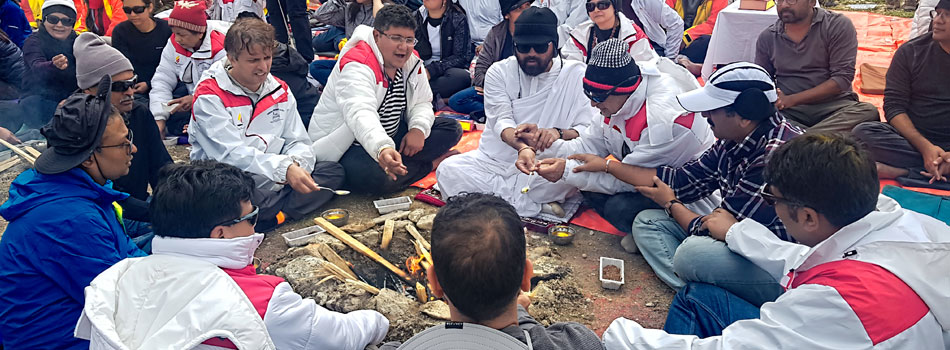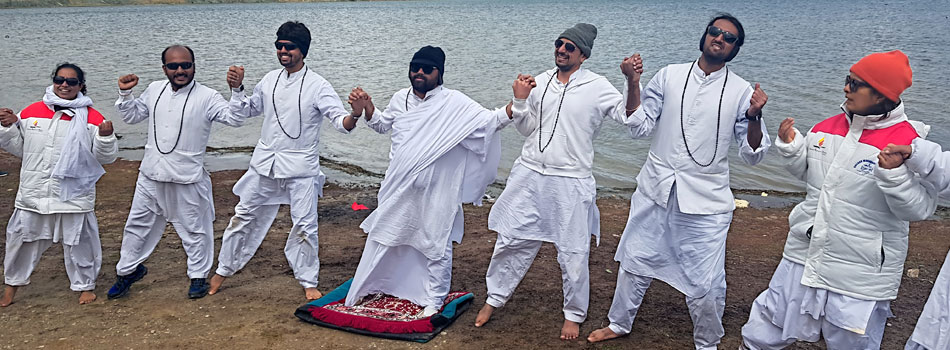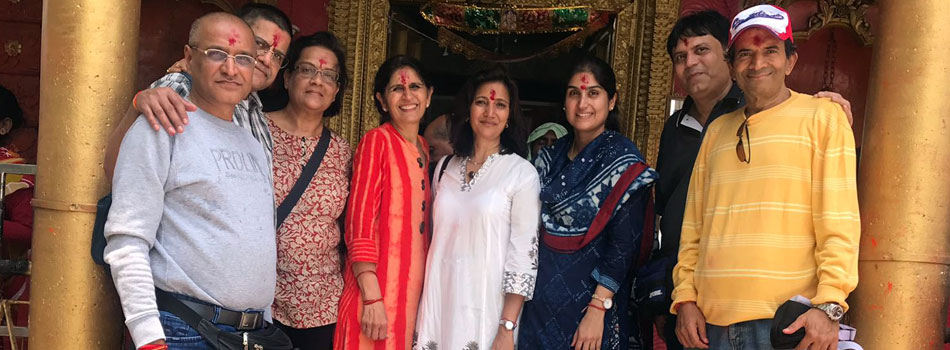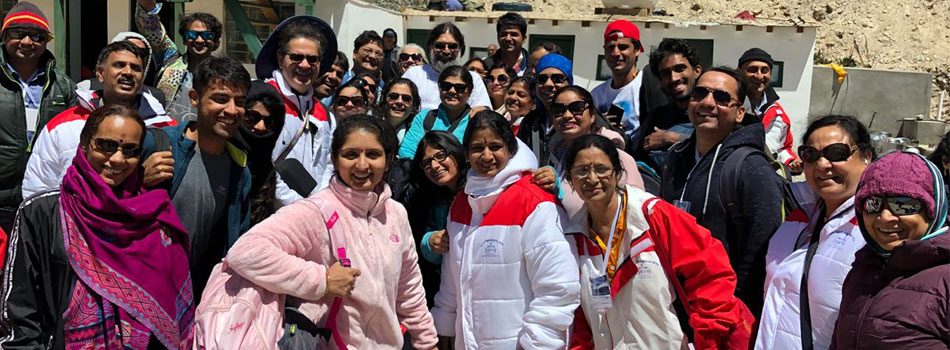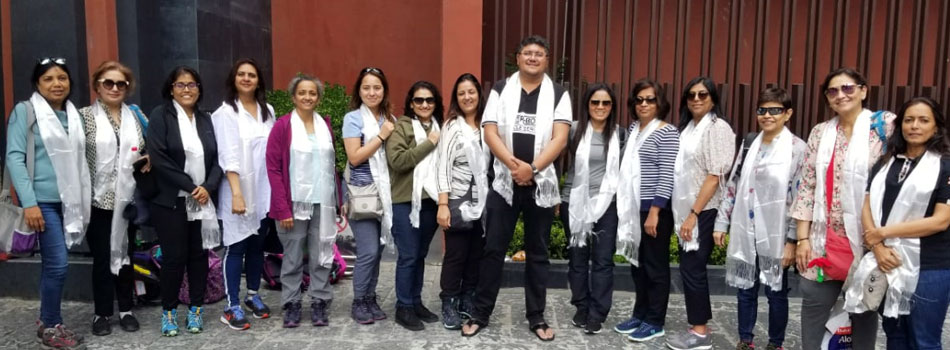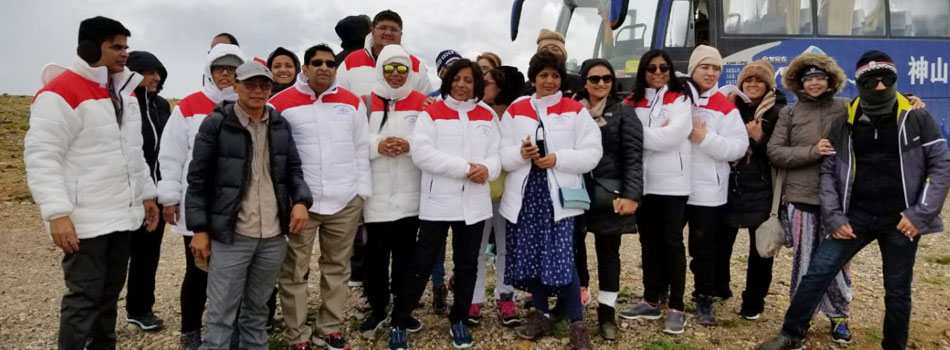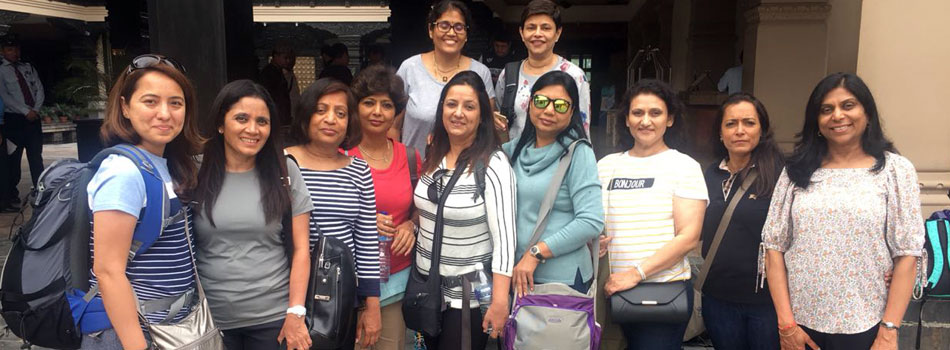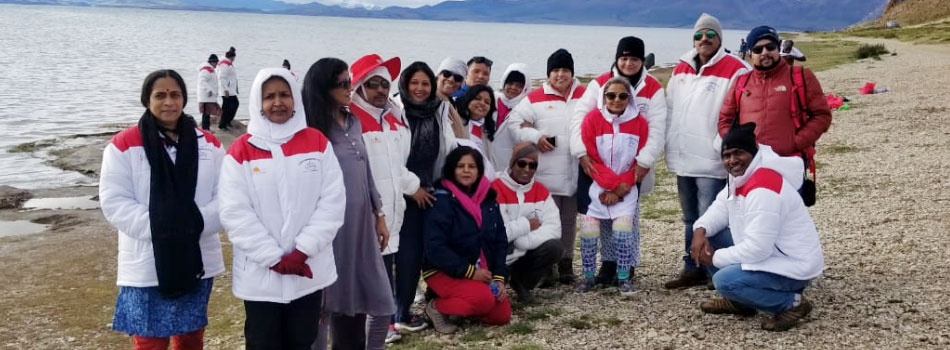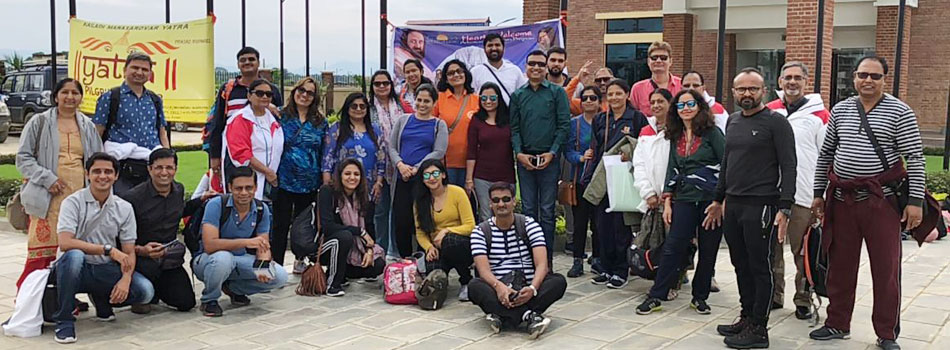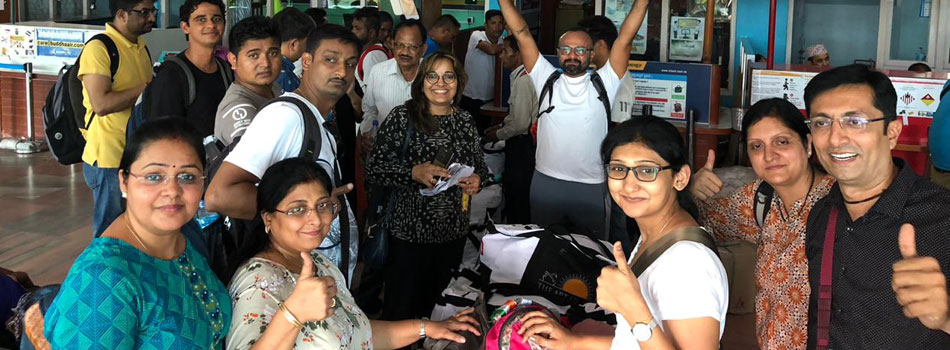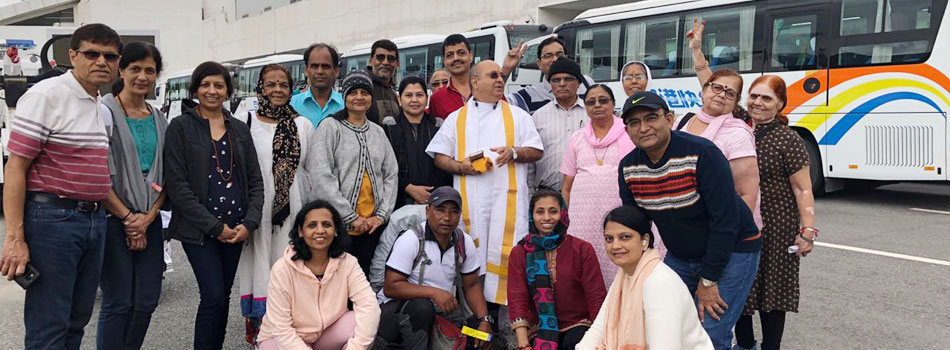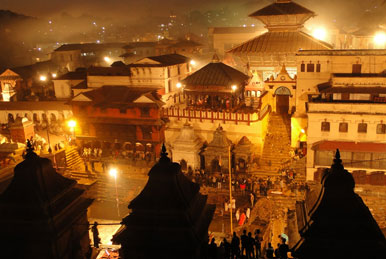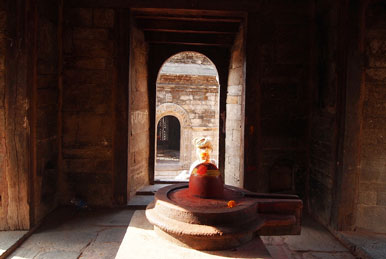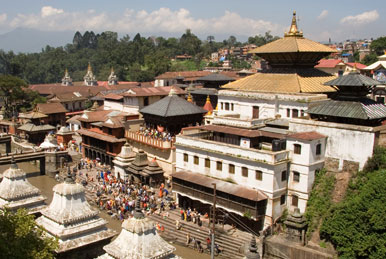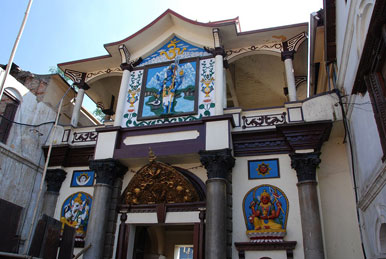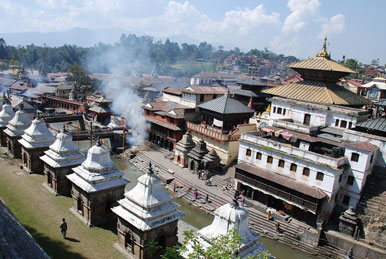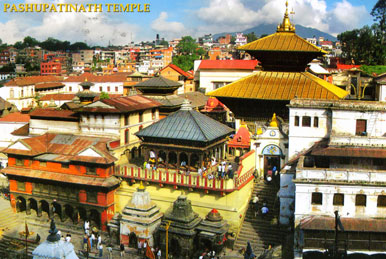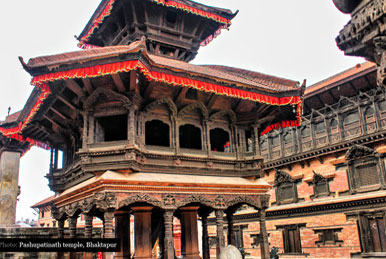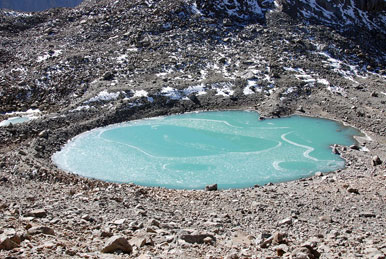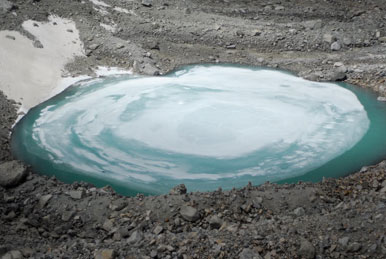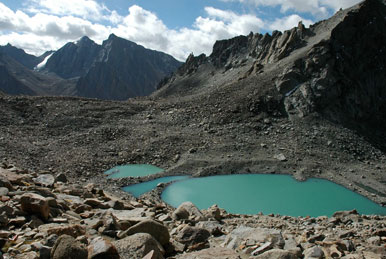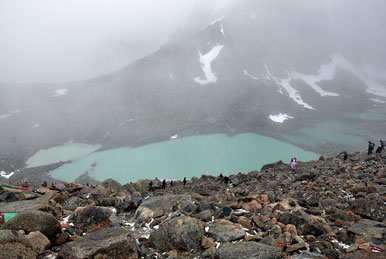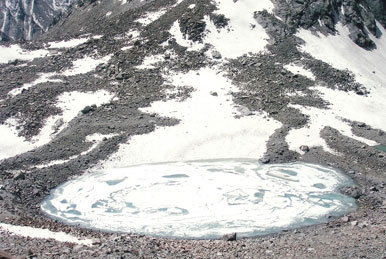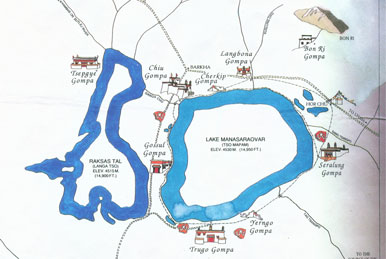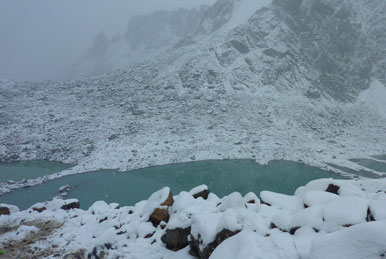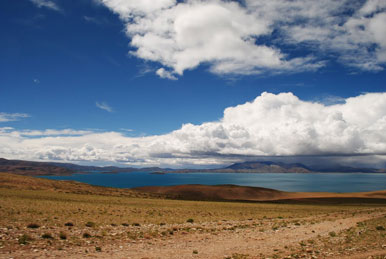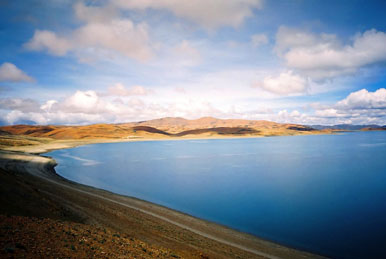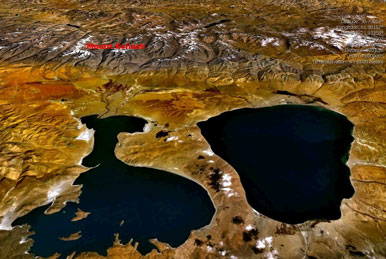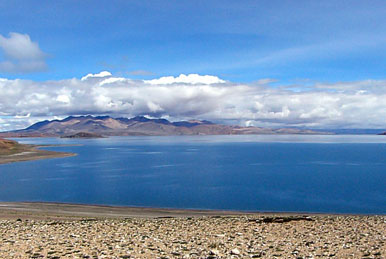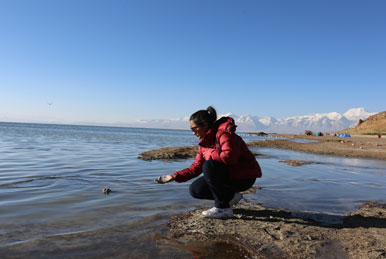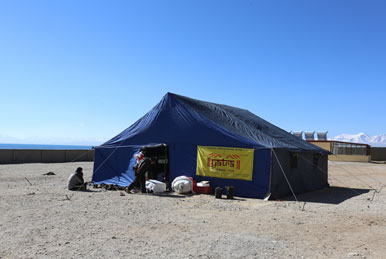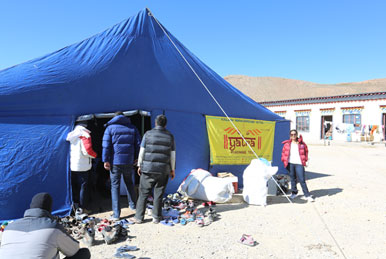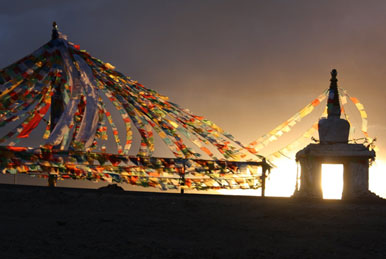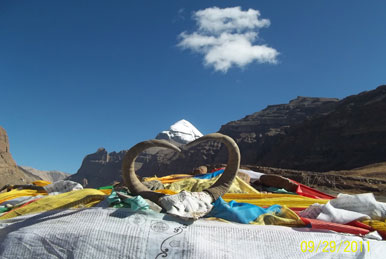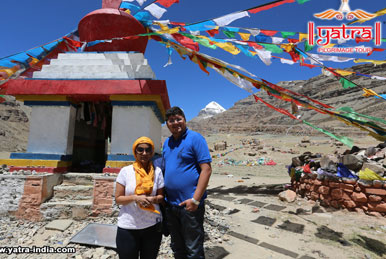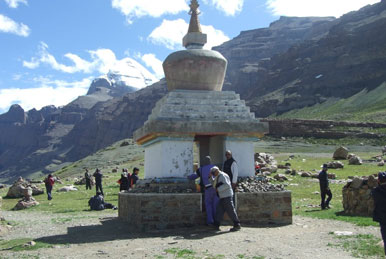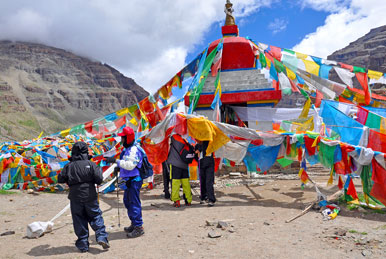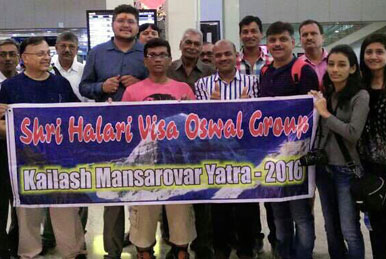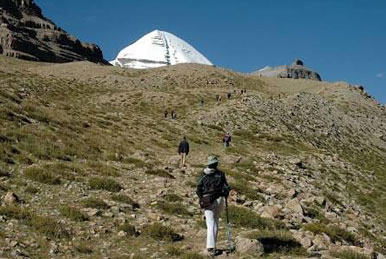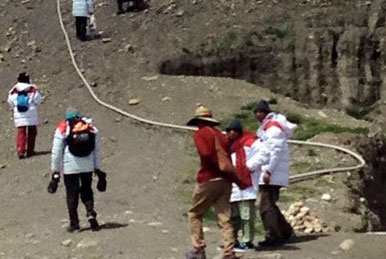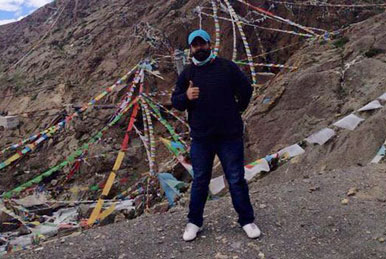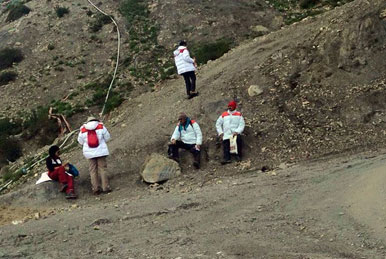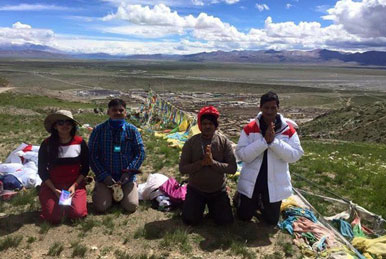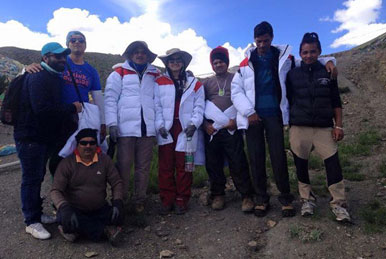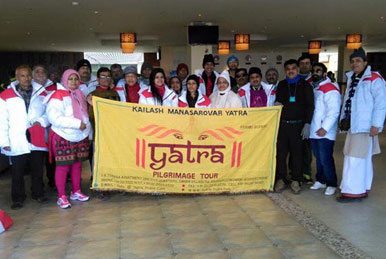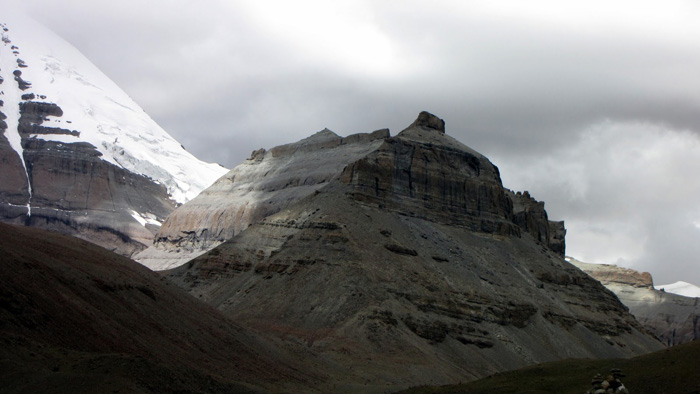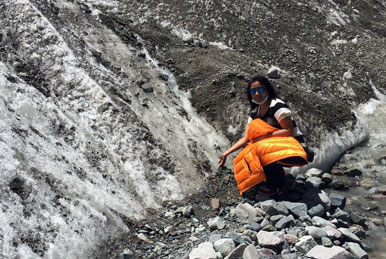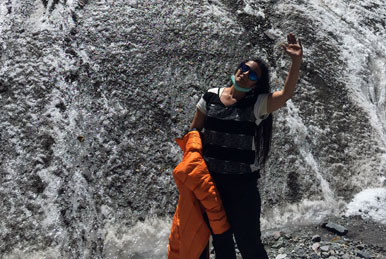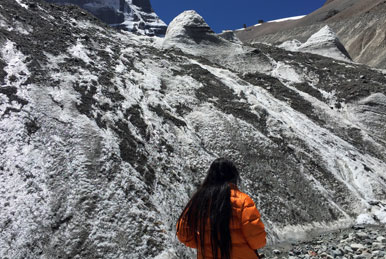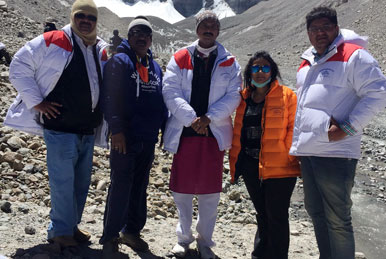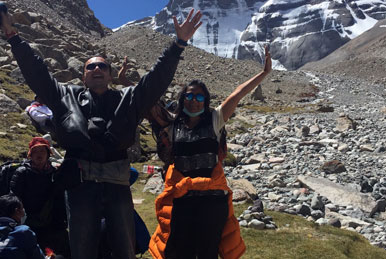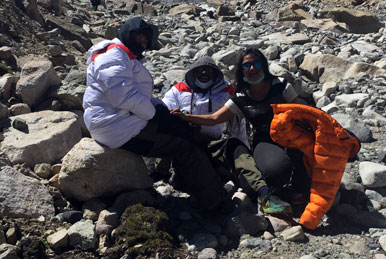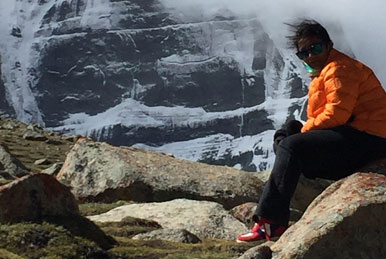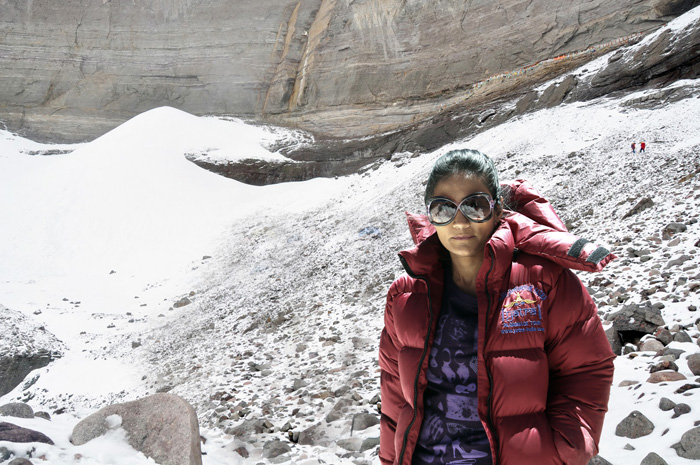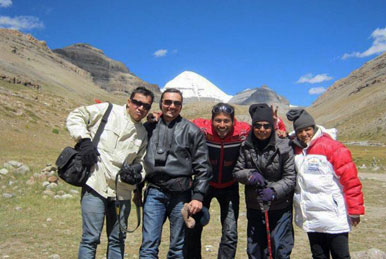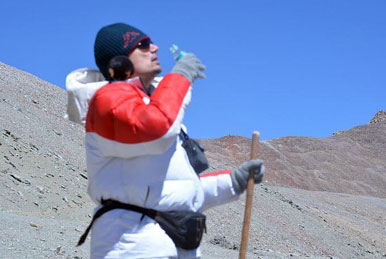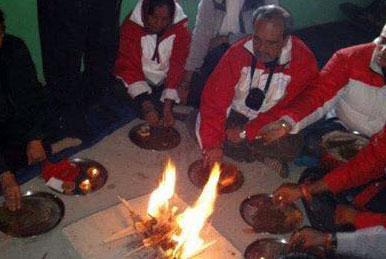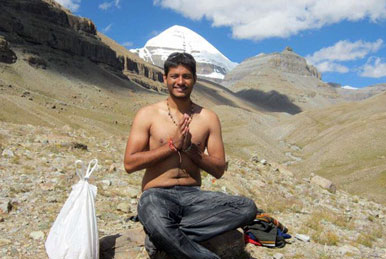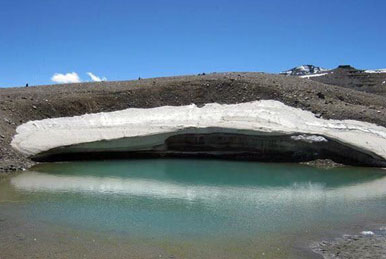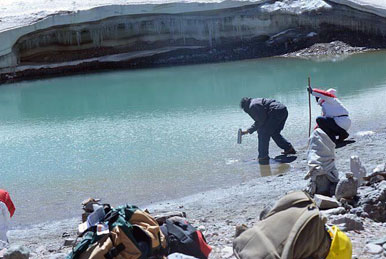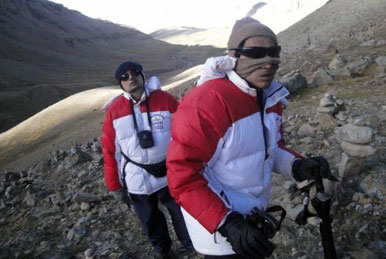IMPORTANT INFO
Prerequisites
1. Age
Participants must be between 18 and 70 years of age. Those below the age of 18 must either be accompanied by a parent/guardian or a consent form need to be signed by them.
2. Medical
Be physically and mentally fit.
Please note that this trek is not advised for pregnant women and those suffering from chronic health problems, like epilepsy, heart ailments, uncontrolled BP, diabetes, asthma, psychological problems, physical disabilities and obesity.
3. Passport
A valid passport is needed with a minimum validity of 180 days from the last date of the sojourn.
Participants must be between 18 and 70 years of age. Those below the age of 18 must either be accompanied by a parent/guardian or a consent form need to be signed by them.
2. Medical
Be physically and mentally fit.
Please note that this trek is not advised for pregnant women and those suffering from chronic health problems, like epilepsy, heart ailments, uncontrolled BP, diabetes, asthma, psychological problems, physical disabilities and obesity.
3. Passport
A valid passport is needed with a minimum validity of 180 days from the last date of the sojourn.
Planning & Preparation
If you have planned the trip to Kailash-Mansarovar, you need to increase your walking habits, practice climbing little mountains, start doing some exercises with the consultation from your doctor. Reduce drinking alcohol and alcoholic beverages and smoking habits. Consult your family doctor to assess the state of your health for functioning safely within your own limitations. In addition to the personal prescriptions by your physician, a First Aid Kit is a must for travel.
The YATRA entails a three day trek around mount Kailas at a high altitude of approximately 19000 ft. Therefore the following is essential:
• Daily practice of yoga and meditations
• Daily brisk walking or jogging for 5 km
Physical and mental fitness are essential as at a times difficulties may arise due to limited facilities and extreme weather conditions. Request your Doctor to prescribe effective medicines to cover the following:
The YATRA entails a three day trek around mount Kailas at a high altitude of approximately 19000 ft. Therefore the following is essential:
• Daily practice of yoga and meditations
• Daily brisk walking or jogging for 5 km
Physical and mental fitness are essential as at a times difficulties may arise due to limited facilities and extreme weather conditions. Request your Doctor to prescribe effective medicines to cover the following:
- Fever
- Body & Joint pains
- Stomach Cramps
- Chest Congestions
- Stiffness
- Sore Throat
- Cold
- Headache
- Acidity
- Loose Motion
- Indigestion
- Constipation
- Diarrhea
- Cough
- Sneezing
- Nose Blocks
- Vomiting
- Dysentery
- Swellings
- Muscle Pulls
- Sore Eyes
Things to Carry
Along with your medicines, carry a First Aid Box which includes the following:
- Vaseline
- Band Aid
- Cotton
- Bandage Roll
- Facial Tissues
- Toilet Papers
- Rubber bands
- Small Plastic bags
- Dark Sunglasses
- Glare protection
- Cough Drop
- Chopstick
- Dettol/Listerine
- Mouth Fresheners
- Antiseptic
- Nose Inhaler
- Ear Muffs
- Candles/lighter
- Eye Masks
- Dust Cover
- Amrutanjan/Vicks
- Cologne
- Body Lotion
Travel in Tibet
TIBET,referred to as highest region on earth ,is also one of the least developed parts of the world .
Being extremely remote and isolated ,the facilities for pilgrims although being upgraded are still
at a basic and limited scale .so entering Tibet,it might be necessary at times to share a room with
a few others or participate in an outdoor toilet adventure,or go without a shower for a few days.In
case ,we will always be there to support you and make the Yatra a pleasant one.
Registration Requirements
Please send the following along with the registration form :
- 3 photocopies of your passport .Please send only the first page(with photo and passport validity details)and last page (with your address)ensure that the photocopy of your passport is clear ,especially your photograph.Do not send copies of PIO/OCI and any other ID cards.
- 3 passport size photos.
- Medical fitness certificate confirming your fitness to trek to Kailash at an altitude of 19000 feet.
Packing Suggestions
A Complimentary duffle bag per person will be provided.You will be required to pack all articles needed for travel to Tibet in that bag and leave the rest of your luggage behind at the hotel.
In addition ,a backpack is required to carry daily essential items.it will be the only piece of luggage allowed in the car during the travel.Rest of the luggage will follow on a truck.
We recommend the following items:
In addition ,a backpack is required to carry daily essential items.it will be the only piece of luggage allowed in the car during the travel.Rest of the luggage will follow on a truck.
We recommend the following items:
- One rain proof jacket with hood and pants
- One woolen high neck sweater
- Two warm tshirts/sweatshirts and pants
- Six sets of clothing
- Two pairs of thermal inner wear
- One woolen cap and scarf
- One pair of water proof trekking shoes (with spare laces)
- Two pair of thick woolen gloves
- Three to four pairs of woolen socks
- Two pair of cotton socks
- One light weight single bed sheet
- Camera (optional)
OTHER ESSENTIAL ITEMS:
- Personal clothing
- Toiletries
- Inflatable pillow
- Small flask (1/2 liters)
- Sunscreen lotion (50 SPF or more)
- Powerful flashlight (with extra batteries)
- Healthy snacks /dryfruits (water based)
- Towels
- Toilet tissues
- 3 Unbreakable water bottles
- Sunglasses
- Hand sanitizer
- General footwear
Inclusions & Exclusions
Services Include :
? Arrival & Departure airport transfers.
? 3 Nights accommodation in Kathmandu using twin sharing room with meals
? One Day guided tour in Kathmandu.
? All accommodation on Group Sharing Basis.
? Both Kailash Parikrama ( ON FOOT) and Mansarovar Parikrama (by jeep)
? Supporting Crew including our own cooks
? Freshly cooked full board vegetarian meals.
? Transportation by Land Cruisers (4 people each)
TIBET PART & NON AC BUSES NEPAL SIDE? 3 Nights accommodation in Kathmandu using twin sharing room with meals
? One Day guided tour in Kathmandu.
? All accommodation on Group Sharing Basis.
? Both Kailash Parikrama ( ON FOOT) and Mansarovar Parikrama (by jeep)
? Supporting Crew including our own cooks
? Freshly cooked full board vegetarian meals.
? Transportation by Land Cruisers (4 people each)
? CHINESE/Tibetan guide from Tibet Tourism Board ? (TTB)
? Kailash Permit.
? Normal TIBET/ CHINA VISA FEE.
? Kailash Completion Certificate.
Services Exclude : ? Kailash Permit.
? Normal TIBET/ CHINA VISA FEE.
? Kailash Completion Certificate.
? Nepal re entry Visa (not needed for Indians).
? Airfares to Kathmandu
? Any expenses of personal nature such as Travel & Medical insurances, Drinks, Laundry, Telephone / Fax, Calls, Additional Porterage or transportation.
? Any additional Expenses Caused by reasons beyond our control such as Natural Calamities (Land slides, floods), flight delays, rescheduling or cancellation, any accidents, Medical evacuations, riots, Strikes, evacuation costs etc.
? Any tips to drivers, hotel staff, and any meals apart from the ones mentioned above.
? Any other tax or service charge, stay charge that could be enforced during this period will be extra and need to be borne by you.
? Services other than Specified.
? Cost raised due to the flight cancellation, bad weather etc cost created by any mentioned above.
? Airfares to Kathmandu
? Any expenses of personal nature such as Travel & Medical insurances, Drinks, Laundry, Telephone / Fax, Calls, Additional Porterage or transportation.
? Any additional Expenses Caused by reasons beyond our control such as Natural Calamities (Land slides, floods), flight delays, rescheduling or cancellation, any accidents, Medical evacuations, riots, Strikes, evacuation costs etc.
? Any tips to drivers, hotel staff, and any meals apart from the ones mentioned above.
? Any other tax or service charge, stay charge that could be enforced during this period will be extra and need to be borne by you.
? Services other than Specified.
? Cost raised due to the flight cancellation, bad weather etc cost created by any mentioned above.
Risk & Liability
?YATRA? will make every effort to ensure that your journey is smooth and as pleasant as possible, however please be reminded that all programs in Tibet are strictly conducted under the rules and regulation of Tibet Tourism Bureau. Therefore, neither YATRA or its TIBET Agent shall be Responsible for any changes in the itinerary due to unavoidable Circumstances including but note limited to Government restrictions, Landslides, Road Blockages, Flooding, Snowfall, Climatic conditions, Political additional costs that are a result of such circumstances will be Born by the travelers.
Insurance
All travelers are advised to purchase travel insurance that provide care and services for sickness, accidents, emergency rescue, ted. related to international travel. ?YATRA? shall not be responsible for the loss of Personal assets and belongings of the travelers due to unavoidable reason or mishap.
Eatables
Bringing your favorite snacks are highly recommended like Biscuits, Khakaras, fry Indian sweets, dry fruits, chikki, pre cooked food etc. We will be providing vegeterian breakfast / packed lunch / dinner cooked by our chef.
Caution & Remarks
Even though Participants do not need to Submit any health certificates those with a history of medical problems, particularly cardiac or respiratory, should consult a doctor before deciding to undertake the trip.{ Specially Kailash or Tibet trip is regorous and challenging trip where all the time are Spent at high altitudes.}
? Carry appropriate Substitution Drugs for individuals allergic to any of above.
? Avoid medication such as sleeping tablets, sedatives, strong painkillers,and anti histamines, which depress the respiration and increase the risk of {AMS} {?Acute Mountain Sickness ?} especially while sleeping.
? Drink plenty of water.
? A Portable hyper Baric Chambers called a ?GAMOW BAG? may be helpful in reversing the effects of mild to severe ?AMS?.
? It is advisable to carry extra money for personal expenses apart from the tour cost (hiring of horses/poniesfor circumbulation of mount Kailash)
? Carry appropriate Substitution Drugs for individuals allergic to any of above.
? Avoid medication such as sleeping tablets, sedatives, strong painkillers,and anti histamines, which depress the respiration and increase the risk of {AMS} {?Acute Mountain Sickness ?} especially while sleeping.
? Drink plenty of water.
? A Portable hyper Baric Chambers called a ?GAMOW BAG? may be helpful in reversing the effects of mild to severe ?AMS?.
? It is advisable to carry extra money for personal expenses apart from the tour cost (hiring of horses/poniesfor circumbulation of mount Kailash)
Cancellations
Due to extensive organization involved with the program , a cancellation policy will be applicable to compensate for the costs incurred .once payment is made the following cancellation penalties will apply:
(1) 45 days before the start of the Yatra :30% of the cost
(2) 30 to 45 days : 40% of the cost
(3) 30 days : 50% of the cost
(4) 29days or less and cancellation without notice :100% of cost
(5) Please note that Token amount is NON - REFUNDABLE.
The effective date of notification regarding cancellation will begin when the notification is received at our premises in writing (letter,email or fax).Verbal cancellation will not be accepted.
(1) 45 days before the start of the Yatra :30% of the cost
(2) 30 to 45 days : 40% of the cost
(3) 30 days : 50% of the cost
(4) 29days or less and cancellation without notice :100% of cost
(5) Please note that Token amount is NON - REFUNDABLE.
The effective date of notification regarding cancellation will begin when the notification is received at our premises in writing (letter,email or fax).Verbal cancellation will not be accepted.
Health Precaution
Oxygen is less at higher altitudes. The inclement whether and high altitude induces certain illness generally not encountered over the plains. Headache, nausea, lassitude, lethargy, breathlessness, general uneasiness (malaise), high irritability, light loss of balance, disorientation, incoherence and insomnia are a few. It is common to all irrespective of the age, sex and physical fitness. Gradual acclimatization is the best answer. Tranquilizers, sleeping does and strong anti-biotic must be avoided. Some of the symptoms indicate that the body mechanism is readjusting to new environments.
Altitude Sickness
It is most necessary and compulsion to know about the sickness while doing tracking or mountaineering in the Himalaya simply travelingin the high altitude.
The basic symptoms of altitude sickness are loosing appetite, hea nausea, shortness of breath, tiredness and dizziness.
The main cause of the altitude sickness is rapid ascending, dehydless oxygen, hypothermia and pressure. There are three type of altitude sickness.
1. Acute Mountain sickness (AMS) :
When you get this sickness then you start to feel like han, headache, tiredness, nausea, loss of appetite, dizziness and disturbance,
2. High Altitude Pulmonary Edema (Hape water in the Lungs) :
The symptoms are breathless, coughing unusual tiredness, high pulse rate like walking, blueness of face, lip and finger nails.
3. High Altitude Cerebral Edema (Hace - water in the head) :
The symptoms are terrible headache, vomiting, walk like a mental confusion and doesn?t want to get bothered by other people.
The best idea is deliberately slow down all the activities and follows the following rules:
Altitude Sickness
It is most necessary and compulsion to know about the sickness while doing tracking or mountaineering in the Himalaya simply travelingin the high altitude.
The basic symptoms of altitude sickness are loosing appetite, hea nausea, shortness of breath, tiredness and dizziness.
The main cause of the altitude sickness is rapid ascending, dehydless oxygen, hypothermia and pressure. There are three type of altitude sickness.
1. Acute Mountain sickness (AMS) :
When you get this sickness then you start to feel like han, headache, tiredness, nausea, loss of appetite, dizziness and disturbance,
2. High Altitude Pulmonary Edema (Hape water in the Lungs) :
The symptoms are breathless, coughing unusual tiredness, high pulse rate like walking, blueness of face, lip and finger nails.
3. High Altitude Cerebral Edema (Hace - water in the head) :
The symptoms are terrible headache, vomiting, walk like a mental confusion and doesn?t want to get bothered by other people.
The best idea is deliberately slow down all the activities and follows the following rules:
- Rest
- Relax do not exert, be excited.
- Reduce talking
- Walk slowly-adopt one third of your normal speed & space
- Keep your load light
- Walk for 15 mins & rest for five mins
- Whenever you feel uncomfortable, just stop; rest & relax
- Ignore the sudden outbursts of fellow pilgrims & avoid arguments
- Observe silence with smile
- Never go too high and too fast
- Avoid smoking & alcohol-drugs & intoxicants
- Consume plenty of liquid; never proceed with a empty stomach
- Chant a prayer or visualize everything around to suit your pleasant thoughts or put on the earphones & listen to your favorite music, bhajans, chanting
- Be careful not to catch a cold. It is better to be over-clothed than under protected.En-route avoids taking bath or drinking water from lakes streams or rivers as your system is not conditioned for this
- Keep your boots/ked inside tent. Protect yourself against dust & direct sunshine during the long stretches of driving. Face, feet & hands must be well protected.
- The uneven ground, steep slope & slushy banks are full of potholes. Do not combine walking & sight seeing together
- Always listen to your guide or the one with experience. Never leave the group.
Route & Climatic Conditions
The route from Kathmandu to Tatopani (Nepal-China border) is narrow and scary but most of it is black topped. The high altitude Tibetan terrain is dry, cold, windy, & dusty. Night is colder rather than day. Torrential rains, strong icy winds are common feature. Flooding rivers & land sides are frequent.
The average altitude is above 4,500 meters and the route covers many high altitude passes.
We at Yatra provide the following equipments & services:
EQUIPMENTS :
The average altitude is above 4,500 meters and the route covers many high altitude passes.
We at Yatra provide the following equipments & services:
EQUIPMENTS :
- Gyamo bag
- Sleeping bag
- Down jacket
- Kitchen Equipments
- Dining Equipments
- Sherpa Team
- Accommodation Tent
- Kitchen Tent
- Dining Tents
- Guest House
- Mineral Water
- Chinese Guide
- Yak & Yak man(for goods carrying)
- Land Cruiser
- Trucks
- Walking Stick
- Oxygen Bottle
- C.D ROM
IMPORTANT LOCATIONS









KAILASH MANSAROVAR YATRA
FIND US ON FACEBOOK
VIDEO CHANNEL


@ Yatra India. All rights reserved.

